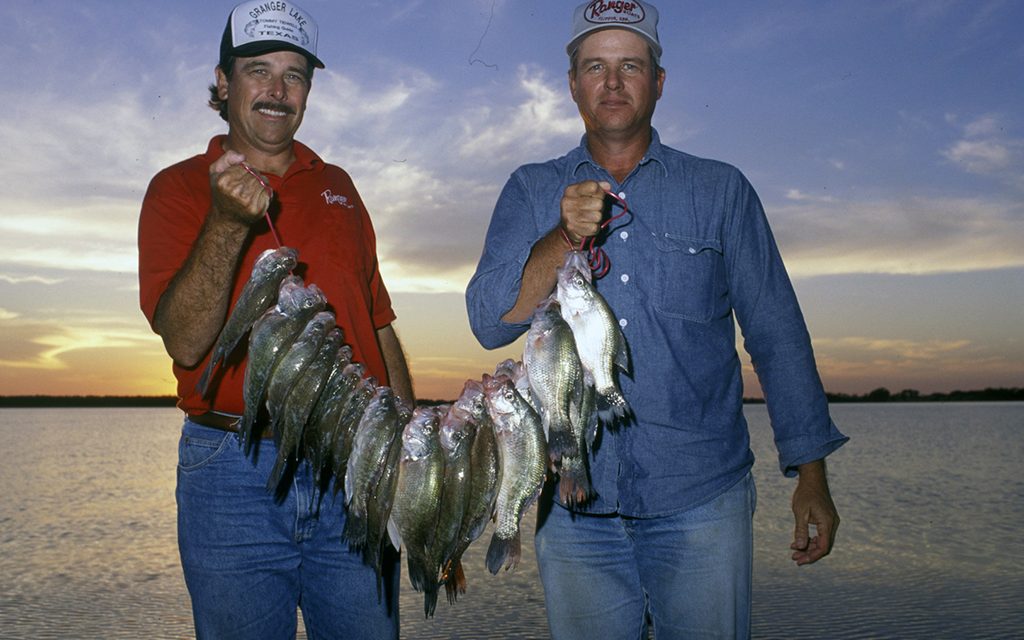by John Jefferson
This column is about crappie – the fish. The proper pronunciation of that species rhymes with “poppy;” not “pappy.”
But I can’t write about crappie without thinking of my friend and frequent fishing partner, Duke Kinley. He has broken and rebroken both black and white crappie records so often that he has quit entering his catches as records. He even broke MY Lake Austin white crappie record. One he caught on Walter E. Long Reservoir (AKA Decker Lake) was so big he had to cut its tail off to fit it in his skillet. He’s caught so many 15-inch crappie that I’ve lost count.
But before some reader nominates him for “Crappie King,” let me tell you he’s more likely the “Compleat Angler” that Izaak Walton wrote about. Several years ago, Kinley cast his way into that charmed circle of bass anglers who have caught a 13-pound or larger largemouth bass. He’s also fed his family with big catfish he’s caught, white bass he and I filled a livewell with one afternoon, and he’s even landed big mouth buffalo and gaspergou – in addition to his crappie success. He fishes for what he wants that day. And usually catches it. But he seems to prefer crappies.
There are two main sub-species of crappie in Texas: White and black crappie. Both are members of the sunfish family. White crappies are said to have irregular dark bars on their sides. They turn darker when spawning, making identification harder. Their dorsal fin has up to six spines, while the black crappies have seven or eight.
Black crappies have irregular black splotches on their sides instead of the vertical bars. They’re more strikingly attractive. They also have deeper chests than the whites. Though there is some argument, both are everywhere. And both are DELICIOUS!
Growing up in East Texas, I never heard the word “crappie”, nor ever saw one. Only later did I learn it was what we called “white perch”. I came upon a man fishing in Cypress Creek, north of Austin, one afternoon and asked him what he had caught. He proudly answered, “Five white perch”. Having not heard that since leaving the Pineywoods, I asked where he was from. He answered, “Beaumont.”
East Texans usually fished for them with minnows. People elsewhere do, too. A classmate mentioned having fished for crappie and I asked how he did that. He answered, “Use little bitty jigs.”
Someone referred me to Tommy Tidwell, a crappie guide on Granger Lake, north of Taylor. He teaches school in Georgetown and guides crappie anglers after school. His brother and I began fishing with live minnows, while Tommy fished with a 1/16th-ounce red, yellow, and black jig. He outfished both of us two-to-one! I switched to the same jig and doubled my catch. In a couple of hours, we had a boat load of crappies. The daily bag limit is 25 crappies/angler, at least ten inches long. My stringer picture showed 53 crappies.
And we released that many undersized ones!
JJ




